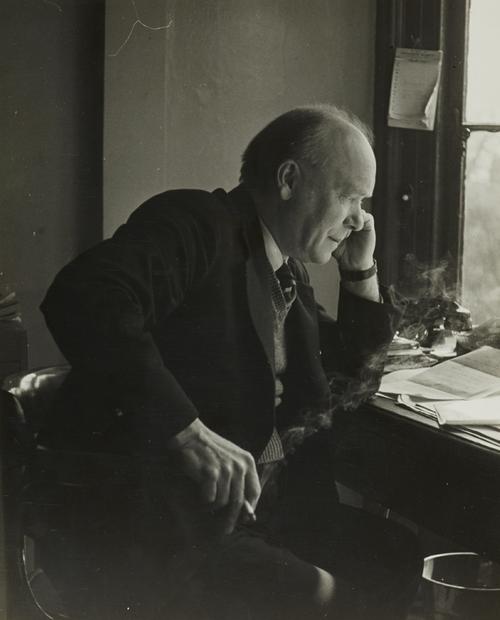Maurice Wilkins, the ‘third man of the double helix’, who was at King's College London with Rosalind Franklin, gets much less credit, in some sense because he thinks they should have found it first. "To think that Rosie had all the 3D data for 9 months & wouldn't fit a helix to it and there was I taking her word for it that the data was anti-helical. Christ." he wrote in a letter to Francis Crick.
But almost entirely forgotten is University of Leeds biophysicist William T. Astbury. Astbury used X-rays to study the molecular structure of wool fibers for the West Yorkshire textile industry and helped transform our understanding of biology and made the very first studies of the structure of DNA, but author Dr. Kersten Hall believes Astbury’s true scientific legacy extends far beyond DNA.
Using the method of X-ray diffraction which had been developed at Leeds a few years earlier by his mentor, Sir William Bragg, Cavendish Professor of Physics at Leeds from 1908-1915, Hall says Astbury blazed the trail in using this technique to explore the physical structure of the giant molecules that make up living things.
In doing so, he came to be one of the most prominent evangelists for the new science of molecular biology, which sought to understand life in terms of molecular shapes.

William Astbury at his desk at University of Leeds (undated). Credit: University of Leeds
“Molecular biology has had a powerful influence on modern medicine. As a former research fellow in molecular biology here at Leeds, I was fascinated to learn more about the pivotal role that Astbury played in the emergence of this groundbreaking new science,” says Hall, a molecular biologist and science historian who has written a book on the topic, The Man in the Monkeynut Coat: William Astbury and the Forgotten Road to the Double-Helix.
Today, molecular biology is at the heart of modern medicine and has given invaluable insights into diseases such as sickle-cell anemia. It has also given rise to the modern biotechnology industry, a legacy which the book argues can be traced to Professor Astbury and his insight that the shapes of biological molecules might be deliberately altered.
This idea found powerful expression in Ashbury's rather unusual overcoat, which was woven from monkeynut proteins that had been deliberately manipulated at the molecular level to make them into a textile fiber substitute called Ardil. It was hoped it might prove a cheap alternative to wool; Professor Astbury wore the coat as an example of the power of the new science.
“Like his coat, Astbury is now largely forgotten,” says Hall. “His story is one of both success and disappointment on a grand scale. Despite making the very first studies of the structure of DNA and having a vital clue within his grasp, he never managed to solve the double-helix himself.”
Such was the Professor’s prowess and reputation that Nobel Prize winner Max Perutz referred to the former’s laboratory at Leeds as the “X-ray Vatican”.
But despite these accolades, in the aftermath of the Second World War, Professor Astbury sought government support to fulfill his dream of establishing Leeds as the national center for the new science of molecular biology, but his plans met with rejection.
Hall says, “Some have suggested that this was such a blow to his spirits he simply gave up the pursuit of DNA, yet this seems to conflict with the image of a man for whom science was always an adventure and who was able to infect his co-workers with a similar excitement and enthusiasm. As his colleague and friend Professor Reginald D Preston once wrote: ‘To be with Astbury is like a perpetual Christmas morning’.”






Comments